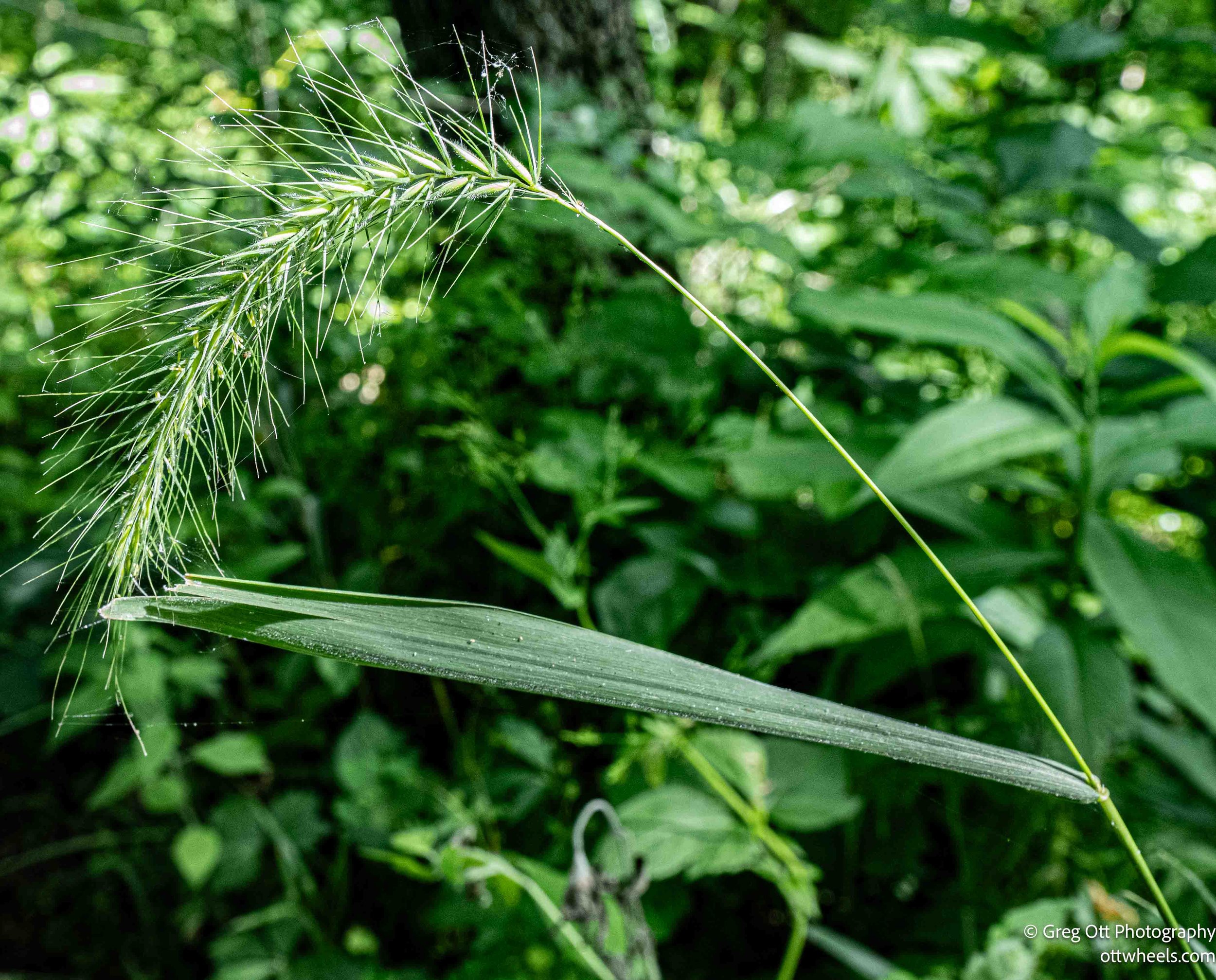Fall Creek, Dust, Turbines, and Timber
I woke early and left Illinois, heading for Fall Creek Preserve—about a 90-minute drive. I’d read about the beauty of the river and wanted to check it out, even if it meant yet another dusty gravel road. The final stretch was four miles of loose stone and washboard rattle. Somewhere in the middle of it, I spotted a fox watching me approach. As I got closer, it darted into the brush like I’d just spoiled its morning routine.
There were two trailheads, and I took the one closest to the lot. The narrow trail immediately dropped into dense woods and looped back in less than a mile. The path was overgrown in spots and threaded with spider webs—apparently, I was the first visitor in a while. I kept wiping the webs off my legs and wondering how many spiders had hitched a ride on my calves. The river could be glimpsed below, rushing over rocks, but there was no good spot for photos. Orange trail markers nailed to metal poles helped guide the way, but mostly I just followed the webs.
As I was leaving, I had a near-death encounter with a mail carrier who had apparently confused “postal route” with “NASCAR qualifying lap.” He came barreling toward me on the same gravel road doing at least 60 mph—the actual speed limit, believe it or not. I was crawling along at 25, but quickly pulled over to avoid getting turned into a headline. The dust cloud was so thick I couldn’t see anything, so I waited a few minutes for it to settle before moving on.
Not two minutes later, here he came again—this time behind me. I didn’t want to eat another helping of his dust buffet, so I did the only logical thing: I floored it. We played high-stakes gravel chicken for a few miles until, mercifully, he veered off onto a side road toward a farmhouse. I was spared round two of dirt-in-my-teeth.
Back on paved roads, I was greeted by an army of wind turbines standing at attention in every direction. I stopped and counted more than 50 just to the northeast. The flat Indiana farmland stretched out beneath them, and they looked like futuristic sentinels—huge white blades carving through the sky. To the west, the turbines were silhouetted against enormous, dramatic clouds. I pulled over to grab a photo of several turbines spinning—each one at its own rhythm. Then, out of nowhere, every single turbine stopped. Just… stopped. Someone in a distant control room had hit the brakes. On the other side of the highway, their turbine siblings spun on, clueless. Was the grid full? Did someone spill coffee on the control panel?
Not long after leaving the turbines behind, I turned onto a quieter, less-traveled road and came across a massive sawmill operation. For what felt like half a mile, neatly stacked piles of cut lumber lined the roadside—each piece identical in size, arranged like a giant's game of Jenga stretched out under the open sky. The wood was clearly in different stages of drying; some stacks bleached pale by the sun, others darker and more seasoned, as if they'd been waiting there for years. I had no idea what the final purpose of all this wood would be, but there was a steady rhythm to it—trucks pulling in, loading up, moving on. I found myself drawn to the quiet order of it all, the repetition and texture, the way the stacks formed geometric patterns against the industrial backdrop. I stopped to take a few photos from the roadside, keeping a respectful distance from the “No Trespassing” signs. There was something strangely calming about it—like witnessing time at work.
Later, I arrived at Tippecanoe River State Park. The campground was nearly empty—maybe 15 to 20 percent occupied. I picked a site shaded by trees, only to discover the canopy was too thick for Starlink to work. I moved a few sites over to a clearing with a better view of the sky.
Still sweating, I found a nearby laundromat to cool off and catch up on laundry. To my surprise, it was clean, modern, and had a tanning salon in the back—because who doesn’t want golden glows with their fabric softener? They also offered a drop-off service: leave your laundry, go run errands, and return to neatly folded clothes. The woman at the front desk was cheerful and helpful.
By 8 p.m., the heat finally let up. I made dinner and sat outside at the picnic table. While I ate, I researched tomorrow’s hike—barely able to load a page with the weak cell/StarLink signals—and began sketching out a 14-day route through Michigan, starting with Lansing, the state capital.
By 9 p.m., it started to rain. Then the sky opened up. Debris scattered across the campground, though fortunately none of it landed on the roof of the van. There air was much cooler and I drifted off.









